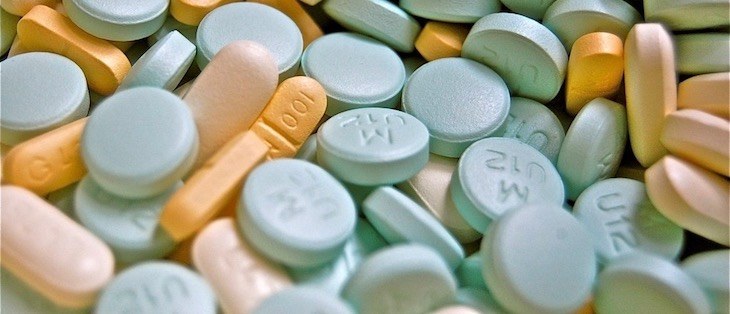ACHI: Opioid prescriptions fall 29% in three-year period
by September 10, 2020 5:00 pm 1,606 views

New data released by the state and the Arkansas Center for Health Improvement show a 29% decline in opioid prescriptions from 2017 to 2019. The data involves an analysis of prescriptions for those with Medicaid and private insurance coverage.
State Drug Director Kirk Lane also revealed there has been an increase in prescriptions for the anti-overdose drug naloxone for those who were prescribed high-dose opioids during that time. Naloxone is important because anyone who uses opioids, especially for long-term pain management, is at risk of a deadly opioid overdose. Those deaths are on the rise across the country, but can be prevented by administering naloxone.
“We still have work to do, but we are making progress,” Lane said. “Arkansas has the second-highest opioid prescribing rate in the nation, so I’m pleased to see opioid prescriptions trending downward and access to life-saving naloxone trending upward.”
ACHI reviewed prescription data for people with Medicaid or private insurance coverage from state fiscal years 2017 through 2019. ACHI found that the number of people with opioid prescriptions dropped from 379,687 in fiscal year 2017 to 268,241 in fiscal year 2019, a decrease of 29%. The state’s fiscal year runs from July 1 to June 30.
ACHI also found that the number of people with opioid prescriptions of 50 or more morphine milligram equivalents, or MME, per day who also received naloxone prescriptions has increased each year since fiscal year 2017.
From fiscal years 2018 to 2019, the number rose from 589 to 1,556, an increase of 164%. The number of people with opioid prescriptions of 90 or more MME per day who also received naloxone prescriptions rose from 501 to 1,108, an increase of 103%.
Despite these increases, the percentage of people who received both high-dose opioid prescriptions and naloxone prescriptions was only 2.93% for people with prescriptions of 50 or more MME per day and 5.35% for people with prescriptions of 90 or more MME per day in fiscal year 2019.
“These percentages are low, and we need to get them higher, but Arkansas is moving in the right direction,” said ACHI President and CEO Dr. Joe Thompson. “I applaud the Arkansas General Assembly for passing legislation to make the life-saving drug naloxone more available to those at risk.”
Lane, who works with the Department of Human Services Division of Aging, Adult, and Behavioral Health Services, said that Act 284 of 2017 authorizes pharmacists to order, dispense, and administer naloxone under a standing prescription and order from the Arkansas Department of Health.
Data used in the analysis were from the Arkansas All-Payer Claims Database, part of the Arkansas Healthcare Transparency Initiative.
Other findings include:
- One naloxone prescription was dispensed for every 34 individuals with opioid prescriptions of 50 or more MME per day in fiscal year 2019;
- One naloxone prescription was dispensed for every 19 individuals with opioid prescriptions of 90 or more MME per day in fiscal year 2019; and
- Pharmacists authorized 1,130 out of 3,137 naloxone prescriptions, or 36%, in fiscal year 2019.
